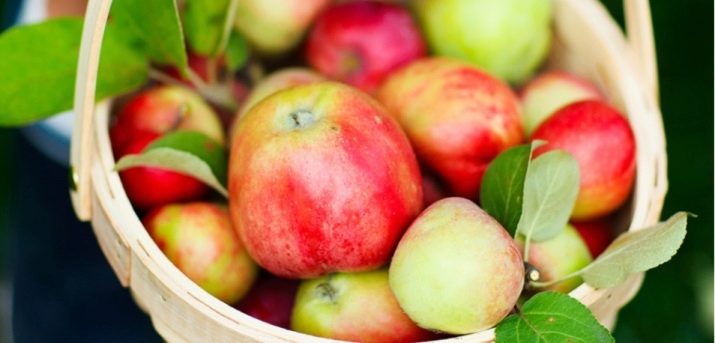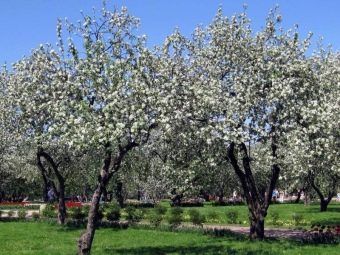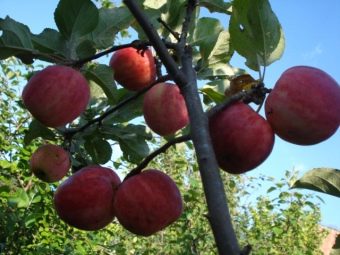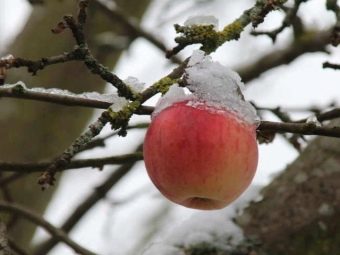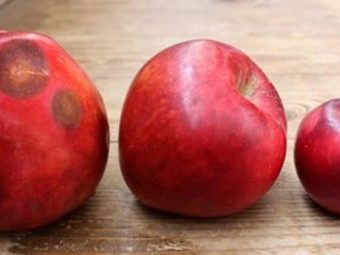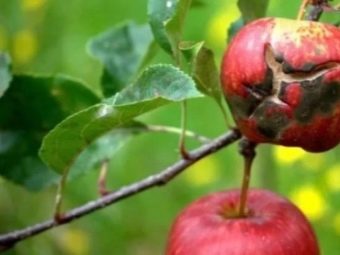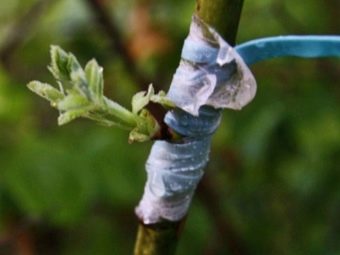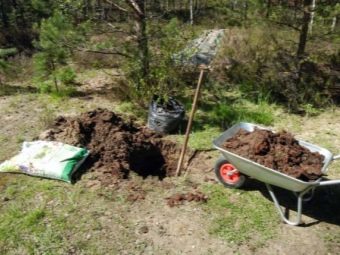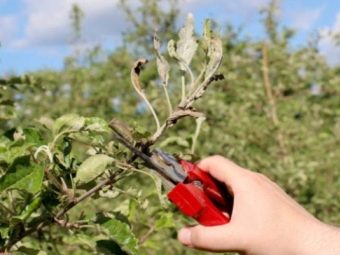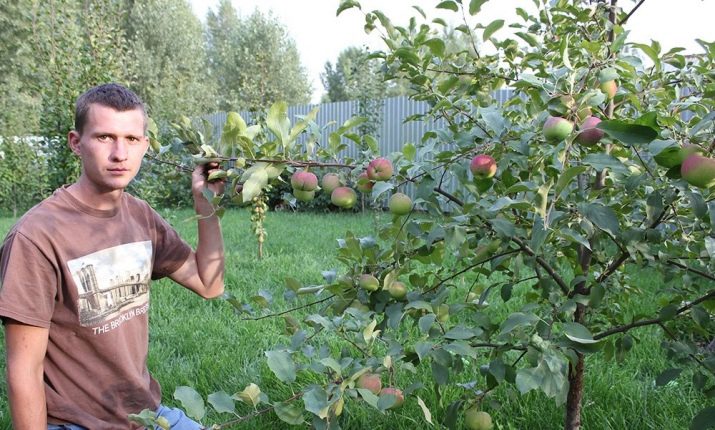Apple "Gornist": description and cultivation of the variety
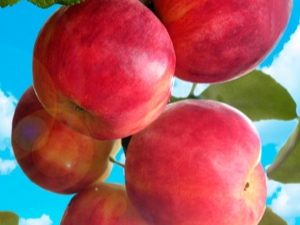
Few modern cottages do without a small orchard, and an important place in it is occupied by an apple tree.The fruits of this tree are widely used both in fresh form and for various pastries - for example, cakes, pastries and charlotte. The volume of expected yield depends strongly on the variety that is properly selected for specific climatic and soil conditions. Therefore, it will be useful to consider the description of the apple "Gornist", the peculiarities of its cultivation and the reviews of the gardeners who have already harvested this fruit.
History reference
Apple "Gornist" was bred at the Sverdlovsk gardening station. The main work on its creation was done by the breeder Leonid Andrianovich Kotov. The Gornist was created on the basis of the Cinnamon Striped variety, which was first pollinated with a mixture of pollen from different Uralic species, and the first hybrid generation then underwent free pollination. In 2002, the variety was included in the unified State Register and passed zoning to the North-Ural region.
Characteristic
From the point of view of the size of the tree, "Hornist" refers to strong-growing varieties - after all, the height of such apple trees can reach 8 and sometimes 9 meters. His crown usually has the shape of a pyramid, which gradually grows as the tree grows. The main branches usually have a reddish tint, on the sapling they are directed upwards, and as they age they start to slope, which explains the expansion of the crown. The bark on such branches often peels off. Fruits on trees of this variety are mainly kolchatki (short shoots). Fresh shoots of this apple have brown color of a dark shade and are covered with dense down.
The leaves of this variety are heavily pubescent, have a green color with a matte shade, have an ovoid or oval shape. The buds are pink at first, as they mature, they get a cream shade, and when fully opened, they turn into white flowers.
At the same time, it is important to take into account that, due to its hybrid origin, Gornist is a self-productive variety. This means that the tree is practically not pollinated by its own pollen (a maximum of the ovary is formed on 4 out of 100 flowers). But this hybrid breed is rather well pollinated by pollen from other apple varieties.
The life of the tree of this hybrid can reach a solid 50 years.
Fruit
In terms of fruit ripening, the variety belongs to the summer season - it can be harvested from the third decade of August. The yield of one tree can reach 90 kg of fruit per season. This means that with the proper planting pattern and regular care, up to one hundred centners of apples can be harvested from 1 hectare of apple orchard. The fertilization of the “Gornist” begins within a period of 4 to 8 years from the time of budding (or another method of vaccination). With a free landing, you also should not expect a harvest earlier than 8 years after planting.
The average weight of a single fruit of this apple is 90 g, and the maximum recorded is 110 g. This means that, according to the size of the fruit, the variety falls into the middle category. Most often, all the fruits on the tree are about the same size.
Apples of the Gornist variety are covered with a smooth skin of red-orange color, on which a bluish bloom and cream veins are sometimes present. The pulp of ripe fruit has a creamy tint and is distinguished by high juiciness with a coarse coarse-grained texture. The high sugar content (up to 14%) in combination with a small amount of acids gives the fruits of this hybrid a very sweet taste.
The fruits of this variety can be used both fresh, and used in cooking or for processing. These apples are especially suitable for juice production.
Benefits
In addition to high yield and early fruiting, Gornist boasts many other positive aspects.
The most important of them is excellent frost resistance, which allows these trees to calmly survive the harsh Ural winters. The minimum temperature that this variety tolerates without problems is -33 ° C.
Another important advantage of the “Gornista” is the absence of interruptions in fruiting. This means that as soon as a tree begins to bear fruit, one can expect a stable harvest to appear during each year of its life.
Like many other hybrids, this variety is notable for its excellent immunity to many dangerous diseases of fruit trees. For example, a disease such as scab, almost does not affect the landing of the "Mountain". Increased resistance to other fungal diseases of plants.
disadvantages
In addition to self-infertility, leading to the necessity of planting next to the "Horny" other varieties of apple trees, characteristic of this variety and several other disadvantages.
The most important of them is the short shelf life of fruits, which is only from 20 to 25 days. Therefore, immediately after harvest, it must either be eaten or processed.
Another drawback - the planting of this variety more often than others become the object of attacks from pests and rodent animals. Particularly dangerous for these apples is the ringed silkworm. In terms of nutritional value, apples of this variety are distinguished by a lower content of vitamin C compared to other breeds - only 11 milligrams per 100 grams of product.
Landing
It is possible to plant this variety as saplings, and by grafting to other breeds. Graft better by budding. Practically any apple varieties are suitable as a stock. Growing with standard rootstock reduces the height of trees to 3 m.
When growing seedlings should be carried out before planting their preparation, which must necessarily include the cleaning of the roots and soaking them in weak aqueous solutions of phytohormones.
For planting, it is necessary to choose an illuminated area with not very acidic soil and low location of groundwater. The distance between seedlings should be from 4 to 5 meters. At a distance of at least 5 meters from the landing should be other types of apple trees. Before planting in the fossa is to make humus.
Care
The main procedures for the care of this variety differ little from those adopted for other apple varieties and are divided into five basic operations:
- regular crown formation;
- pest control;
- shelter for the winter;
- timely feeding;
- regular weeding and watering.
It is necessary to mold the crown every year, it is desirable to give it a slate or tiered form. To cut from the top you need at least 60 cm. Do not forget to cut the dried branches.
To combat the ringed silkworm, it is necessary to prune the branches on which the clutches of this dangerous pest have been found. Cut off the branches should immediately burn.
From other pests will help the use of chemical or biological complex insecticides. To protect against animal attacks, you need to monitor the integrity of the fence around the site.
It is desirable to feed the complex fertilizers with a high content of nitrogen, phosphorus and potassium. Depending on the condition of the soil, fertilization should be carried out 1 to 3 times a year.
Reviews
All gardeners who grow Gornist on their plots note the great taste of its fruit. Many argue that their growing experience confirms the declared parameters for frost resistance and disease immunity. Most gardeners also note that under the same growing conditions, the yield of trees does not fall with time.
Among the shortcomings, the authors of the reviews note the impossibility of making stocks of fruits of this variety for long-term fresh storage. Some gardeners are criticized by the high height and wide crown of Gornist’s trees, which leads to shading of other crops. Sometimes the authors write that this breed attracts many pests to the site, including both insects and hares (and sometimes even deer).
To learn how to plant an apple tree, see the following video.

